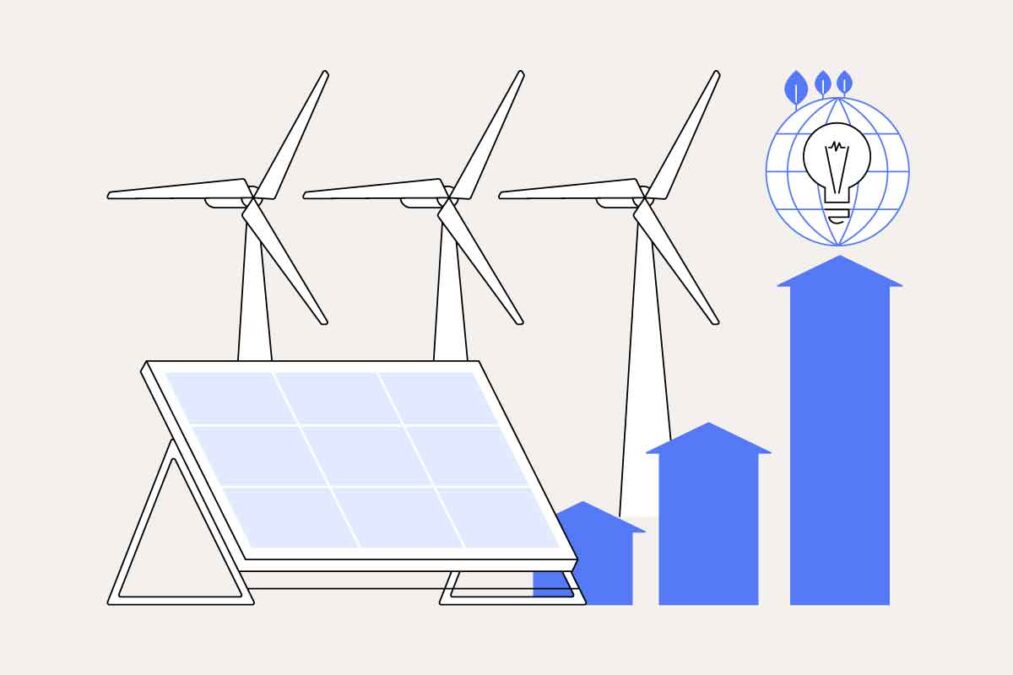Electricity is a critical resource for businesses, powering everything from office equipment to manufacturing processes. For business owners, managing electricity costs is essential to maintaining profitability. This is where understanding business electricity rates comes into play. Whether you’re a small business or a large corporation, knowing how these rates work can help you make informed decisions to save money on energy expenses. In this article, we’ll explore what business electricity rates are, how they are determined, and actionable tips to reduce your energy bills.
What Are Business Electricity Rates?
Business electricity rates refer to the cost of electricity supplied to businesses by energy providers. Unlike residential electricity rates, which are generally straightforward and consistent, business rates can be more complex. These rates vary based on factors such as the size of the business, energy consumption patterns, and the type of tariff chosen.
For businesses, electricity is typically charged at a per-kilowatt-hour (kWh) rate, but additional costs such as demand charges and capacity fees may also apply. These components can make up a significant portion of your energy bill, especially for businesses with high energy demands.
Understanding the structure of business electricity rates is the first step toward optimizing your energy costs. Let’s dive deeper into the factors that influence these rates.
Factors That Influence Business Electricity Rates
Several factors contribute to the variation in business electricity rates across industries and regions. Below are some of the most important ones to consider:
1. Energy Usage
One of the main factors affecting business electricity rates is the amount of energy your business consumes. Larger businesses with high energy needs often qualify for lower per-unit rates due to bulk usage. However, they may also face higher demand charges during peak usage times.
2. Time of Use
Some businesses are charged based on the time of day they use electricity. This is known as time-of-use (TOU) pricing. Peak hours, typically during the day, come with higher rates, while off-peak hours (nights and weekends) have lower rates. Understanding your usage patterns can help you take advantage of lower rates during off-peak periods.
3. Location
Geographic location also plays a major role in determining business electricity rates. Regions with abundant energy resources or competitive energy markets often have lower rates, while areas with limited resources or high distribution costs may have higher rates.
4. Tariff Type
Energy providers offer different tariffs tailored to the needs of businesses. Fixed-rate tariffs lock in a consistent rate for the duration of the contract, while variable-rate tariffs fluctuate based on market conditions. Choosing the right tariff can significantly impact your overall energy costs.
5. Market Conditions
The state of the energy market, including supply and demand dynamics, fuel prices, and government policies, can influence business electricity rates. For example, a spike in natural gas prices can lead to higher electricity costs, as gas is a major source of energy generation in many regions.
Fixed vs. Variable Business Electricity Rates: Which Is Better?
Choosing between fixed and variable business electricity rates is a key decision for business owners. Both options have their pros and cons, depending on your business’s energy needs and risk tolerance.
Fixed Rates
Fixed business electricity rates provide stability by locking in a set rate for the duration of the contract. This option is ideal for businesses that prefer predictable energy costs and want to avoid market fluctuations. However, fixed rates may be slightly higher than the lowest variable rates during periods of low market prices.
Variable Rates
Variable rates fluctuate based on market conditions. While they can offer lower costs during periods of low demand, they also come with the risk of higher charges during peak times or market instability. Businesses with flexible energy usage schedules may benefit from variable rates by adjusting consumption during low-rate periods.
How to Compare Business Electricity Rates
To ensure you’re getting the best deal, it’s essential to compare business electricity rates from multiple providers. Here’s a step-by-step guide:
1. Gather Usage Data
Collect data on your business’s energy usage, including monthly consumption, peak demand, and time-of-use patterns. This information will help you identify the most suitable tariff.
2. Research Providers
Research energy providers in your area and request quotes tailored to your business needs. Consider both the per-kWh rate and additional fees, such as demand charges and capacity fees.
3. Use Comparison Tools
Online comparison tools can simplify the process by allowing you to compare multiple providers and tariffs in one place. These tools often highlight key details such as contract length, termination fees, and renewable energy options.
4. Negotiate Contracts
Many providers are willing to negotiate, especially for businesses with high energy demands. Don’t hesitate to ask for discounts or customized tariffs that align with your energy usage patterns.
5. Read the Fine Print
Before signing a contract, carefully review the terms and conditions. Pay attention to factors such as contract duration, rate changes, and penalties for early termination.
Tips to Lower Your Business Electricity Rates
Reducing energy costs goes beyond comparing providers. Here are some practical tips to lower your business electricity rates and overall energy expenses:
1. Conduct an Energy Audit
An energy audit identifies areas where your business can improve energy efficiency. From upgrading lighting systems to optimizing HVAC equipment, small changes can lead to significant savings.
2. Invest in Energy-Efficient Equipment
Switching to energy-efficient appliances and machinery can reduce energy consumption without compromising productivity. Look for equipment with ENERGY STAR ratings for guaranteed efficiency.
3. Use Smart Technology
Smart thermostats, sensors, and energy management systems can help you monitor and control energy usage in real time. These technologies enable you to adjust consumption during peak periods to avoid higher rates.
4. Take Advantage of Renewable Energy
Many providers offer green energy tariffs that allow businesses to use electricity generated from renewable sources such as solar or wind. While these tariffs may not always be cheaper, they can provide long-term stability and environmental benefits.
5. Optimize Operational Hours
If your business has flexibility in scheduling, consider shifting energy-intensive operations to off-peak hours when rates are lower. This strategy works particularly well for businesses on time-of-use tariffs.
The Importance of Regularly Reviewing Your Business Electricity Rates
Energy markets are constantly evolving, and so are the tariffs offered by providers. Regularly reviewing your business electricity rates can help you identify opportunities to save. By staying informed about market trends and renegotiating contracts when necessary, you can ensure your business is always getting the best deal.
Conclusion: Take Control of Your Business Electricity Costs
Understanding and managing business electricity rates is crucial for any business looking to optimize its energy expenses. You can reduce costs and improve your bottom line by learning how rates are determined, comparing providers, and implementing energy-saving strategies.
Whether you’re considering a fixed or variable rate, investing in energy efficiency, or exploring renewable energy options, the key is to stay proactive. With a clear understanding of your energy needs and the tools to manage them effectively, you can take control of your electricity costs and focus on growing your business.



